Yemen: Why is the war there getting more violent?
- Published
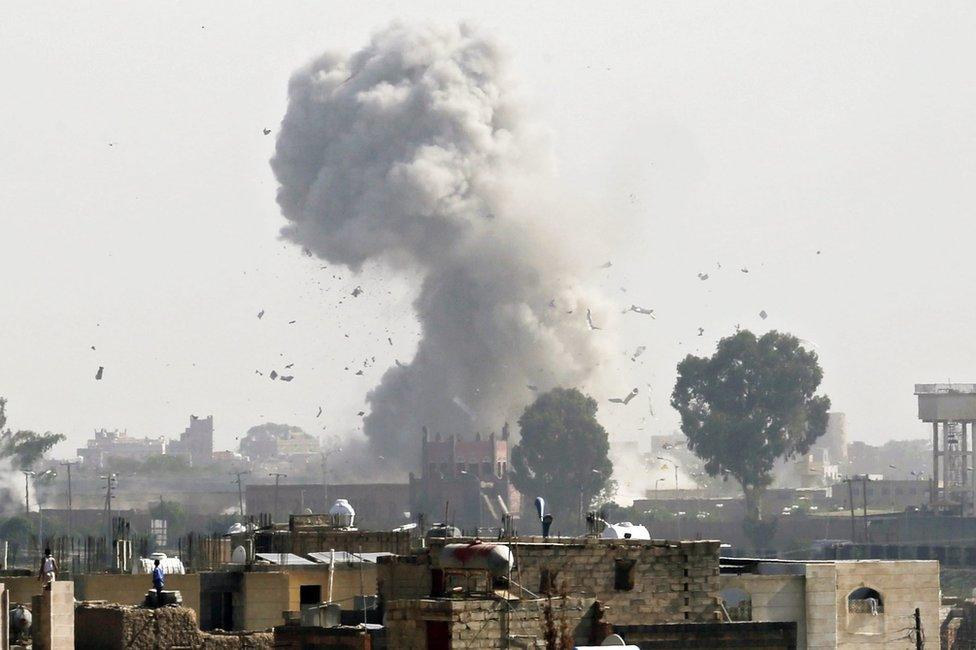
Thousands of civilian deaths have reportedly been the result of Saudi-led coalition air strikes
The warring sides in Yemen are swapping hundreds of prisoners - a move which has built hopes for a permanent ceasefire between the Saudi-backed government forces and the Iranian-backed Houthi rebels.
The eight year-long civil war has led to the deaths of thousands of Yemenis, and created a major humanitarian crisis.
How did the war start?
In 2011, a popular uprising in Yemen forced its long-standing authoritarian president, Ali Abdullah Saleh, to hand over power to his deputy, Abdrabbuh Mansour Hadi.
However, the new president was overwhelmed with Yemen's economic problems, and security problems such as attacks by jihadists. Furthermore, most of Yemen's armed forces felt more loyalty to the ousted president than they did to Mr Hadi.
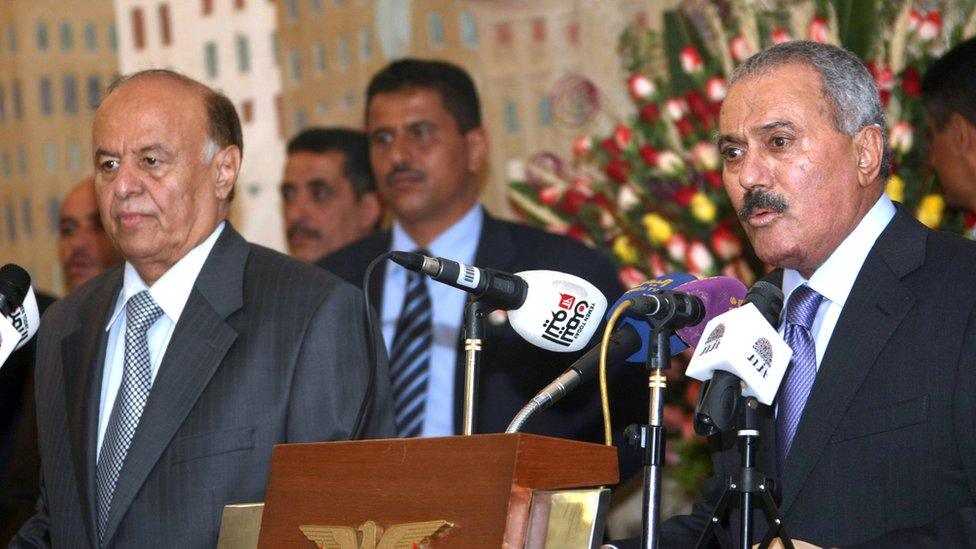
Ali Abdullah Saleh (R) was forced to hand over power to Abdrabbuh Mansour Hadi (L)
The Houthis took advantage of his weakness.
Formally known as the Ansar Allah (Partisans of God), they champion Yemen's Zaidi Shia Muslim minority.
In early 2014, they seized control of Saada province, in the north of the country and then captured the nation's capital, Sanaa, forcing President Hadi to flee abroad in March 2015.
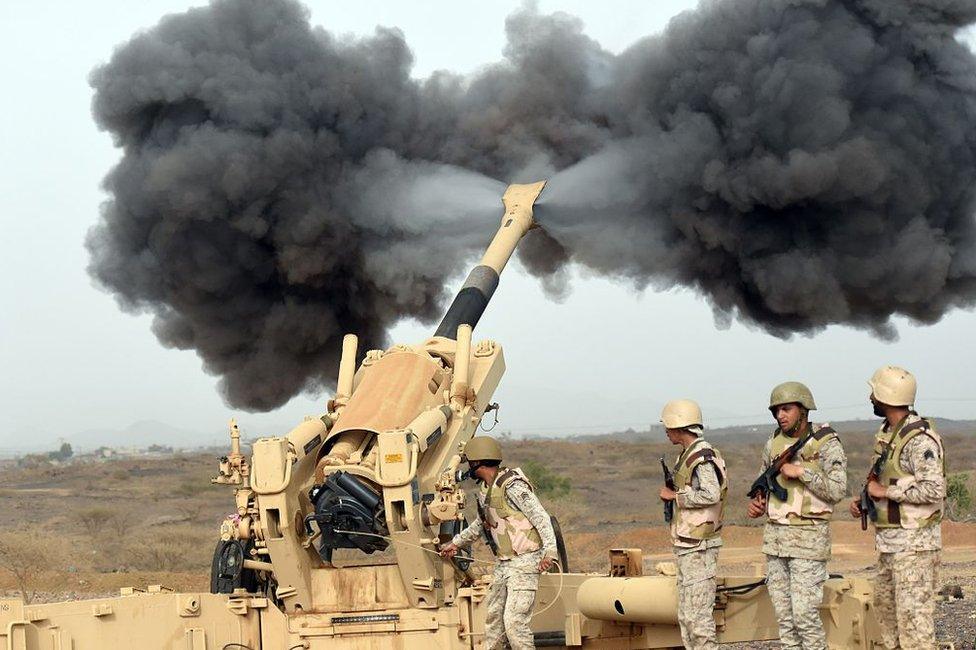
A Saudi-led multinational coalition intervened in the conflict in Yemen in March 2015
Yemen's neighbour Saudi Arabia was alarmed by the prospect of the Houthis taking control of Yemen, fearing it would become a satellite of Saudi Arabia's rival, Iran.
In March 2015, it and other Arab states began an air campaign aimed at ousting the Houthis and restoring Mr Hadi's government.
The coalition received logistical and intelligence support from the US, UK and France.

What's happened since then?
In August 2015, coalition ground troops landed in the port city of Aden and drove the Houthis out of the south of Yemen. However, they could not dislodge them from Sanaa or the north of the country.
Yemen's official government is now in Aden, while President Hadi himself is based in Saudi Arabia.
The Houthis allied with the former president, Ali Abdullah Saleh, to form a "political council" to govern the area under their control. However, in December 2017, Saleh broke with the Houthis and called for his followers to fight them. Saleh was killed and the Houthis defeated his forces.
In 2018, the Saleh loyalists joined the Saudi-led coalition. Together, they launched a major offensive against the Houthis to recapture the Red Sea city of Hudaydah. The port there is the principal lifeline for millions of Yemenis at risk of famine.
After six months of fierce fighting, the two sides agreed a truce in the city.
In 2021, the Houthis launched an attack on Marib, the government's last stronghold in the north and the centre of an oil-rich province.
Fighting escalated in March this year across the province, forcing thousands of people to flee their homes.
'Double tap' attacks in Yemen's civil war
The Houthis have attacked targets in Saudi Arabia and the UAE with ballistic missiles and drones, targeting sites including oil installations but also injuring civilians.
Saudi and US officials have accused Iran of smuggling weapons such as drones to the Houthis, in violation of a UN arms embargo. Iran has denied the allegation.
The Saudi-led coalition has carried out thousands of air strikes which have killed tens of thousands of people, according to the UN.
These include "double tap" attacks, in which the first strike hits a group of enemy troops and the second one hits the people who go to their rescue.
The UN says both sides in the civil war may have committed war crimes. Both sides deny the allegation.

In April 2022, the UN brokered a ceasefire between the Saudi-led coalition and the Houthi rebels, though the sides failed to renew it six months later.
However they recently agreed to swap approximately 900 prisoners as a confidence measure which it is hoped could lead to a permanent ceasefire.
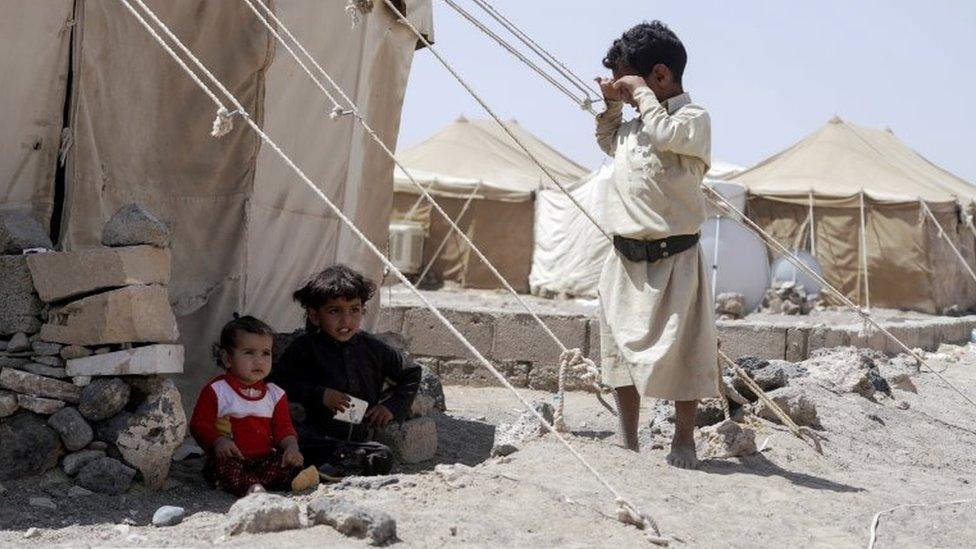
Four million people have been forced to flee their homes
What's been the human cost?
The UN says Yemen is experiencing the world's worst humanitarian crisis.
It says 4.5 million people, one in seven of the population, have been displaced. while 24.1 million people, 80% of the population, are in need of humanitarian aid and protection.
The UN says that tens of thousands of people in Yemen are currently living in famine-like conditions, while some six million people are on the verge of famine.
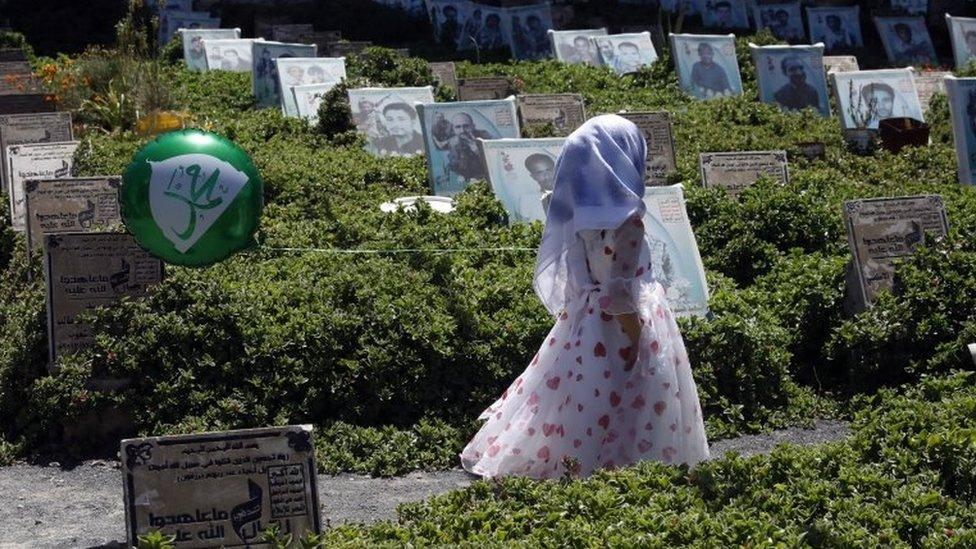
More than 10,000 children have been killed in the fighting, according to the UN
The UN estimated that by the start of 2022, the conflict in Yemen had caused over 377,000 deaths, with 60% the result of hunger, lack of healthcare and unsafe water.
It says more than 11,000 children are known to have been killed or wounded as a direct result of the fighting.
Yemen has also suffered from one of the largest cholera outbreaks ever recorded, with 2.5 million suspected cases and about 4,000 related deaths since 2016.